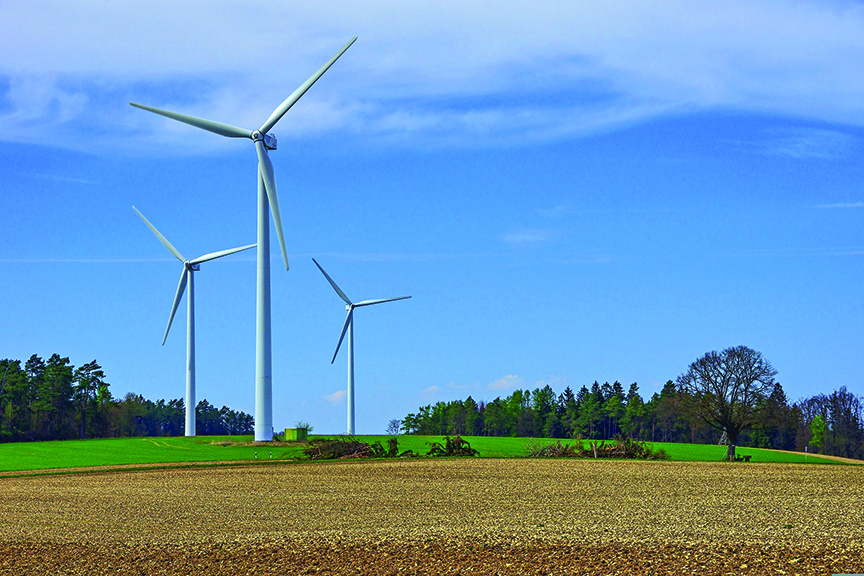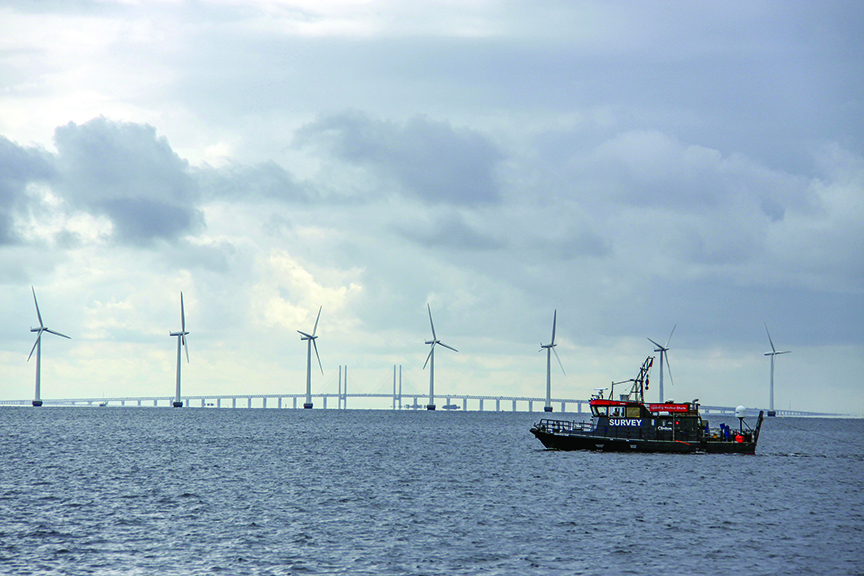Some wind energy facts and figures
August 2025

On land or at sea, the operation of wind turbines creates some environmental concerns, particularly with wildlife, noise and aesthetics.
by Scott Flood, Contributing Columnist
When Bob Dylan penned his first big hit, “Blowin’ in the Wind,” more than six decades ago, he was thinking about peace and freedom — not large turbines that generate electricity from powerful winds.
While many people still see wind energy as a recent development, humans have been harnessing the power of the wind for over 2,000 years. American agriculture expanded across the plains largely because of windmills that brought underground water to the surface to support crops and livestock. In other places, windmills powered the grinding wheels that turned grains into flour.
More recently across the country, co-ops have been among the leaders in deploying wind power to generate electricity, especially through what’s called “distributed wind energy.” Unlike large investor-funded wind farms that use hundreds of turbines to produce bulk power for distant towns and cities, distributed wind is used to generate power for immediate local consumption. This meets many co-op members’ needs, helps some communities thrive and helps strengthen the nation’s electric grid. Nationwide, co-ops have expanded their renewable energy capacity by 192% over the past decade.
ON LAND AND AT SEA
Offshore wind turbines offer many of the same benefits as those on land, along with one key advantage: wind speeds over the ocean tend to be higher and steadier, allowing the turbines to produce significantly more electricity. According to the American Geosciences Institute, a wind turbine can generate twice as much electricity from a 15 mph wind as it can from a 12 mph breeze.
The economic development benefits of wind generation are also impressive. Nearly 150,000 Americans currently work in the wind power industry, and the Bureau of Labor Statistics reports that wind turbine service technicians represent this decade’s fastest-growing career. In addition to producing electricity, wind projects generate nearly $2 billion in annual taxes and lease payments, thereby improving local economic health.
Understandably, wind energy is less suitable in areas where the winds are too light or unpredictable. In addition, installing turbines and their associated infrastructure in remote areas can be complex and costly, outweighing potential economic advantages. Maintenance and repairs in remote areas may also carry higher costs.
On land or at sea, the operation of the turbines creates some environmental concerns. Birds and bats that fly into blades and towers may be injured or killed. The spinning turbine blades can also be a source of noise for people living nearby.
In addition, many people view the tall structures as eyesores. That’s particularly true with offshore wind turbines situated near coastal areas popular with tourists.
It’s also worth noting that the economics of wind energy often rely on state and federal incentives. Without those enticements, electric co-ops and commercial developers may find other forms of generation to be more affordable.
So, while the answer to the energy needs of co-ops may indeed be blowing in the wind, getting there will demand plenty of time, money, innovation and some good old-fashioned problem solving.
Scott Flood writes for the National Rural Electric Cooperative Association.

Offshore wind turbines offer many of the same benefits as those on land, along with one key advantage: wind speeds over the ocean tend to be higher and steadier, allowing the turbines to produce significantly more electricity.
